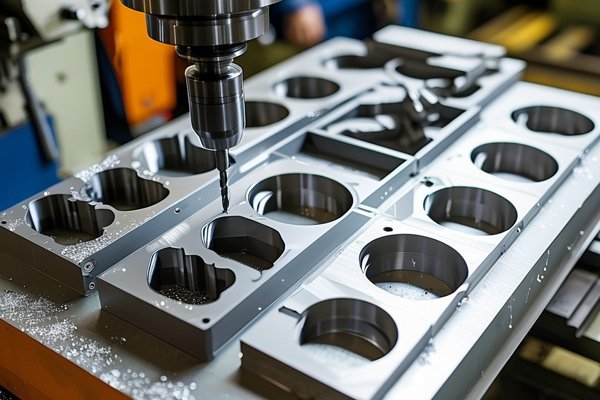CNC (Computer Numerical Control) precision machining is a hallmark of modern manufacturing, particularly when it comes to producing complex parts. Did you know that the global CNC machining market was valued at approximately $63.6 billion in 2020 and is expected to reach around $100 billion by 2026? This staggering growth highlights the technology’s importance across various sectors. Industries like automotive, aerospace, and medical devices rely heavily on CNC machining due to its ability to produce intricate designs with remarkable accuracy.
In this blog, we’ll explore how CNC precision machining can ensure the quality and accuracy of complex parts during production. We’ll dive into leading-edge technologies, techniques, and strategies that help manufacturers minimize errors and enhance efficiency. Let’s get started!
Understanding CNC Precision Machining
Before we delve into ensuring quality and accuracy, let’s clarify what CNC precision machining entails. CNC machining is a process in which computer software controls machine tools to automate and execute a series of manufacturing tasks, including drilling, milling, turning, and grinding. It enables the creation of complex geometries with exceptional precision, often measured in micrometers.
The versatility of CNC technology makes it suitable for fabricating parts made from various materials such as metals, plastics, wood, and composites. The systems involved can be programmed for a variety of tasks, meaning that they can adapt to produce different components with minimal downtime.
The Significance of Quality and Accuracy in CNC Machining
Quality and accuracy are non-negotiable in CNC machining for several compelling reasons:
Key Technologies Supporting Quality and Accuracy in CNC Machining
Several advanced technologies and methodologies contribute to the delivery of high-quality and precise CNC machined parts:
Computer-Aided Design (CAD) and Computer-Aided Manufacturing (CAM) software are foundational elements in precision machining. These tools allow engineers and machinists to design and simulate complex parts before actual production.
Benefits:
Using high-quality cutting tools and custom fixtures tailored for specific jobs ensures that the machining process remains stable and accurate.
Benefits:
Integrated quality control (QC) systems play a critical role in maintaining precision levels throughout the machining process.
Benefits:

Multi-axis CNC machines, such as 5-axis and 7-axis systems, enable the machining of complex geometries in a single setup.
Benefits:
The combination of CNC machining techniques with additive manufacturing (AM) allows for innovative production methods.
Benefits:
Strategies for Ensuring Consistent Quality and Accuracy
Beyond technologies, manufacturers should implement comprehensive strategies to maintain quality consistency:
Keeping machinists and operators up-to-date with the latest technologies and best practices ensures that human error is minimized.
Clear, documented SOPs for the entire machining process should be established, followed, and refined through continuous improvement efforts.
Regular maintenance of CNC equipment is crucial. Calibration of tools and open loops ensures that deviations are addressed before they can compromise part quality.
Leveraging data from machining processes for predictive analysis can drastically enhance precision and prevent future issues.
CNC precision machining stands as a cornerstone of modern manufacturing, enabling the creation of high-quality, intricate components essential to various industries. By leveraging advanced technologies such as CAD/CAM software, precision tooling, robust QC systems, multi-axis machining, and the integration of additive manufacturing, manufacturers can ensure the highest standards of quality and accuracy.
The importance of these practices can’t be overstated, as they lead not only to cost efficiency but also to improved safety, compliance with regulations, and the functional performance of critical components. As the CNC machining landscape continues to evolve, staying informed and adopting these techniques will be vital for manufacturers seeking to excel in a competitive global marketplace.
Remember, the future of manufacturing is precision-driven, and your approach to CNC machining should reflect a commitment to quality in every aspect. Engaging with evolving technologies and refined practices will not only enhance production capabilities but will also position you as a leader in your field.






